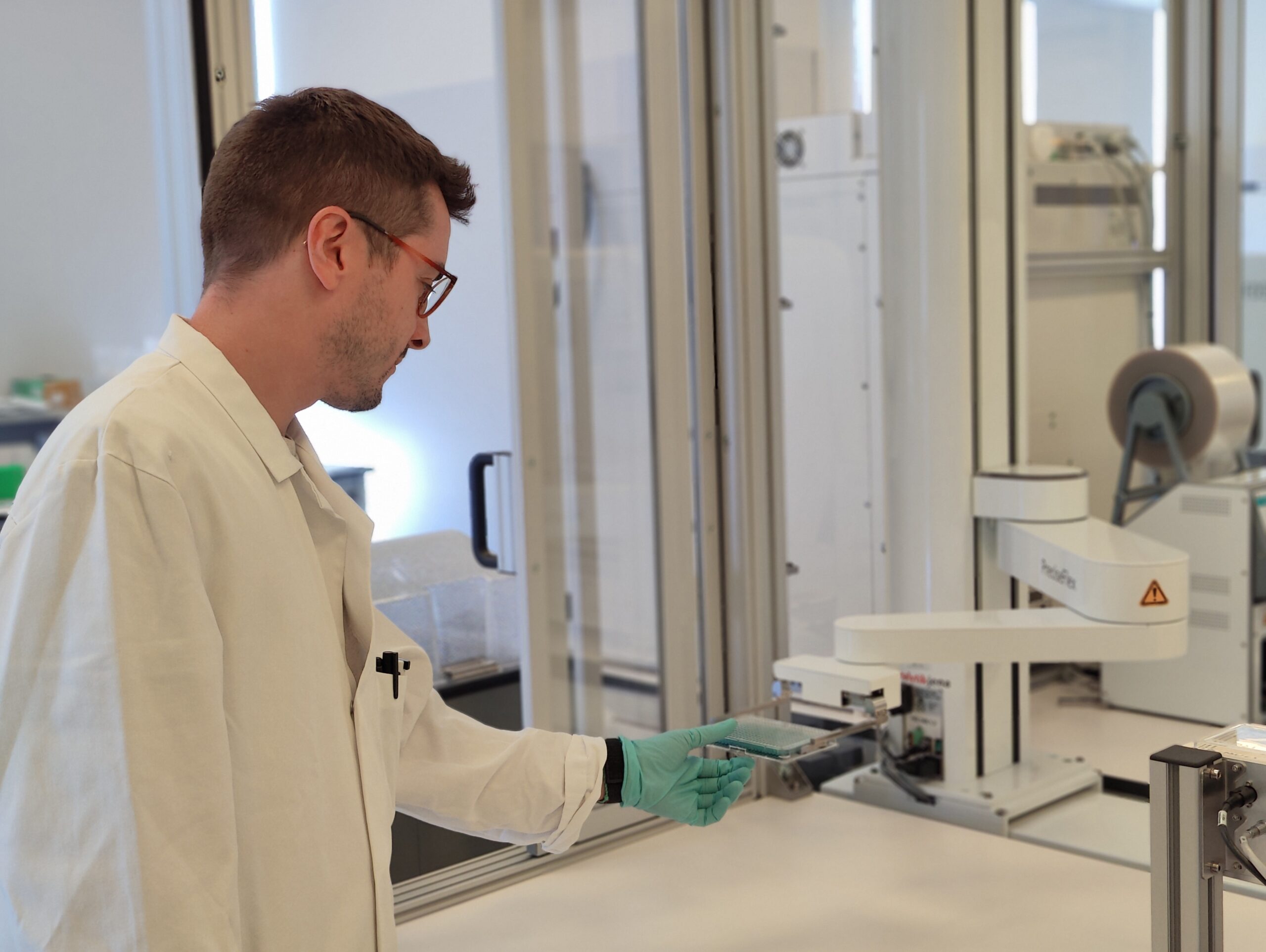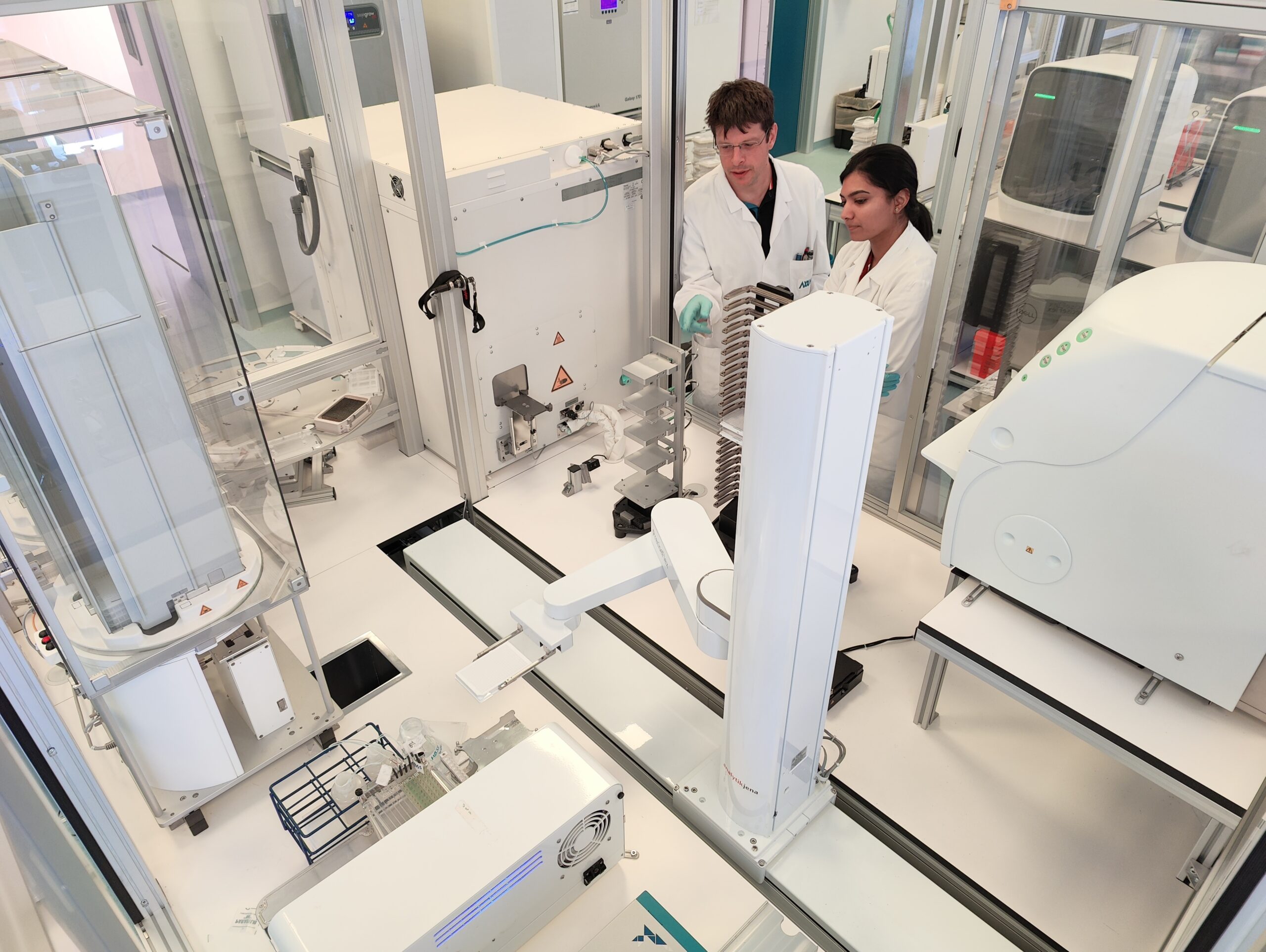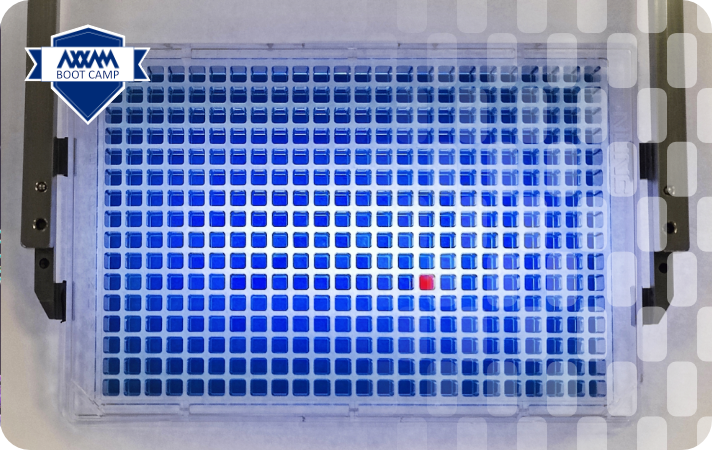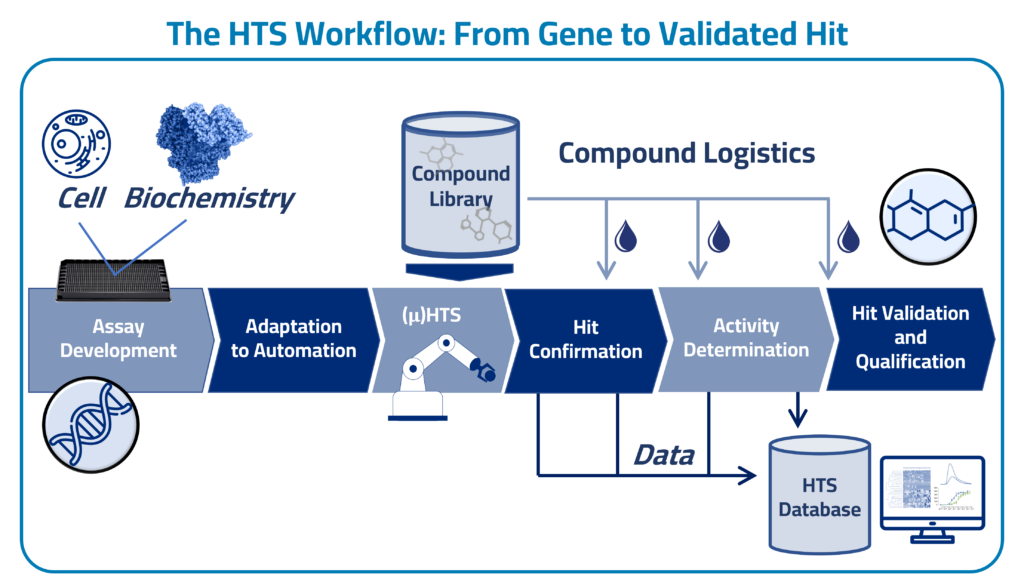Science Spyglass
From Gene to Validated and Qualified Hits,
High-Throughput Screening at Axxam
Despite a constantly expanding repertoire of therapeutic modalities, small molecules continue to account for the majority of new drug approvals and continue to attract attention and investigation, especially with the expansion of the knowledge on different mechanisms of action, including pharmacological chaperones, targeted protein degraders, covalent protein modification, etc.
The small molecule drug discovery research is a complex endeavor that involves multiple stages, each with its own set of hurdles and uncertainties. The hit identification phase is a foundational step in the whole process; by providing the initial set of compounds that have the potential to be developed, it lays the groundwork for a successful drug development. The efficiency, quality, and diversity of hits identified during this phase significantly influence the success and progress of the entire drug development process.
At Axxam we are passionate about small molecules and eager to translate innovative target and disease biology into new therapies to patients in need.
We offer clients access to a broad cutting-edge infrastructure for automated high-throughput screening, a comprehensive high-quality compound library with modern compound management logistics, a leading expertise in assay development and integrated discovery for hit selection. We believe that leveraging on Axxam’s knowledge and experience into clients’ drug discovery programs will facilitate the translation from Gene to Qualified Hit along the discovery workflow.
Assay development
High-Throughput Screening (HTS) assays come in many different flavours monitoring target binding or function in either biochemical or cell-based assay systems. Similarly, assays employ a large variety of (mostly optical) readouts.
Independent of the many diverse technologies available, HTS assays share 3 main features:
- Specificity towards a molecular target and mode-of-action (MoA)
- Robustness combining reproducible low-noise signals with experimental protocols amenable to automation
- Sensitivity towards the desired molecular MoA
Our assay development aims to optimally combine all features in the HTS assay. In-depth assay optimization to probe and fine-tune the assay parameters and protocols ensures assay performance and sensitivity also throughout the adaptation to automation, which is finally assessed by testing a limited compound subset in a pilot run under HTS conditions.
Hit validation and qualification
Definitions of hit validation and hit qualification differ significantly in various organizations. Very often, no distinction is made at all. At Axxam hit validation includes actions to discriminate desired hit compounds from the unwanted ones that are inevitable selected during the HTS, while we refer to hit qualification as an additional post-HTS activity aiming to increase the value delivered with a hit list report.
Hit validation
The single HTS assay is typically not sufficient to ensure discrimination of the desired pharmacological modulators from the inevitable “by-catch” in bioassay testing, i.e. compounds acting through off-target or unspecific interference mechanisms. Therefore, well-designed screening cascades with additional tests tailored towards the individual project needs are required for a diligent hit validation ensuring specific target interaction via the desired molecular MoA. These include:
- Orthogonal assays: same target, but different assay format – for positive selection of hits
- Counter assays: same assay format, but different target – for hit de-seletion
- Selectivity assays: related target, frequently same assay format
As a final step, purity of hit compounds will typically be probed by mass spectroscopy and re-tested from solid material.
To further facilitate a data-driven hit prioritization process in the HTS follow-up, Axxam provides ad hoc services designed to deliver information on:
- Physicochemical properties, i.e. solubility lipophilicity, chemical stability
- Metabolic stability
- Membrane permeability
- Plasma protein binding
- Plasma stability
Hit qualification
In most cases, hit compounds derived from screening a diversity-oriented compound library provide only limited information on the underlying structure-activity relationships (SAR) to instruct further optimization. To explore hits in this respect, our medicinal chemistry experts have devised an efficient process generating “chemical context” around screening hits.
Following the in-depth analysis of available data based on similarity, relevant substructures or functional groups potentially contributing to molecular recognition at the target receptor, the most attractive candidates will be further explored by the team. Starting from a resynthesis of the original hit to confirm its chemical structure bone fide, “strategic analogues” will be designed, synthesized and tested. The results provide initial clues on SAR determinants and help to identify the most suited candidates for further prosecution.
Including in these experiments not only the primary (activity) assay, but also reference assays and tests probing either physicochemical and basic ADME properties further strengthen the specificity of the drug-target interaction and ensures hit selection to be based also on secondary compound properties relevant to evolve hit compounds towards a final target product profile (including for example the intended rout of administration). Finally the expert team will also explore the chemical IP space hit by our compound candidates by searching the patent literature databases.
Our HTSPLUS package includes this thorough hit qualification phase on hit compounds derived from screening the Axxam compound collection AXXDiversity. The package generated will greatly facilitate the process of selecting the best candidates for further Hit-to-Lead optimization and enhance the chances for successful progression.


Infrastructural backbone:
HTS automation and compound & data management
While a comprehensive quality compound library and the smart design of the HTS assay and screening cascade greatly impact the result of individual screening projects, a sophisticated automation and IT infrastructure is another, equally important enabler of success. Laboratory robots and automation not only perform recurrent experimental tasks beyond regular office hours but also with superior precision and reproducibility.
Similarly, in compound management oversized high-tech refrigerators combine optimized conditions of long-term sample storage of compound plates with flexible input and retrieval function. They interface with pipettors and acoustic dispensers to flexibly generate plate copies, cherry-pick hit compounds, and generate serial dilutions in variable formats and volumes (from nl to μl). Tracking each plate’s unique barcode throughout all steps of the process serves not only to protocol the technical execution, it also avoids errors and mis-match between data pharmacological activity data and chemical compounds of the library. Beyond state-of-the-art instrumentation it requires laboratory automation specialists and data scientists with a relevant pharmacology training to operate the HTS workflow successfully.
In summary, Axxam is the perfect partner to take your target biology one step further – from gene to validated and qualified hit.
Related content




